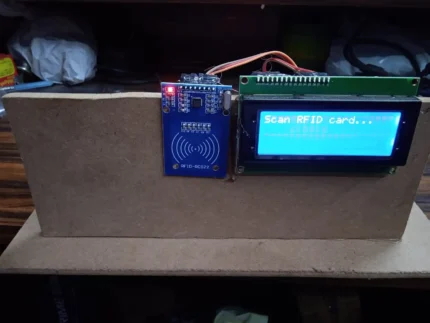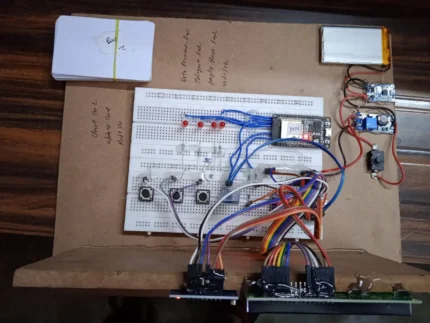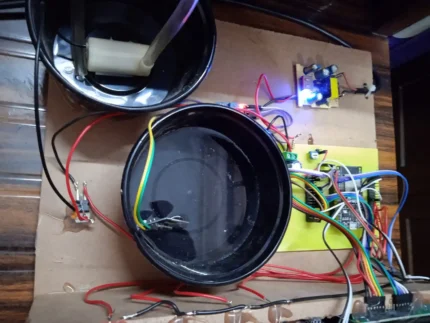
IoT-Based Plant Monitoring System
- Introduction
The escalating concerns surrounding food security and sustainable agriculture have driven significant interest in leveraging technology to optimize plant growth and resource utilization. Traditional agricultural practices often rely on manual monitoring and intervention, which can be labor-intensive, inefficient, and prone to inaccuracies. The advent of the Internet of Things (IoT) offers a transformative approach to plant cultivation by enabling real-time data acquisition, automated control, and remote monitoring.
This report details the development and functionality of an “IoT Plant Monitoring System,” a project designed to autonomously monitor critical environmental parameters essential for plant health and automate key irrigation and ventilation processes. The system utilizes a cost-effective and versatile ESP32 microcontroller as its central processing unit, interfacing with a suite of sensors to gather data on temperature, humidity, and soil moisture. This information is displayed locally on a 20×4 Liquid Crystal Display (LCD) and transmitted wirelessly to the ThingSpeak IoT platform for remote access and data logging. Furthermore, the system incorporates a two-channel relay module to automatically control a fan for temperature regulation and a water pump for soil moisture management based on user-defined trigger values set through variable resistors.
This report will delve into the system’s architecture, hardware and software components, operational principles, data flow, and potential benefits, highlighting its role in promoting efficient resource management and potentially enhancing plant yield.
- System Architecture
The IoT Plant Monitoring System adopts a modular architecture, comprising sensing, processing, control, display, and communication units. Figure 1 illustrates the overall system architecture.
+—————–+ +—————+ +—————–+
| Soil Moisture |—–>| | | Fan |
| Sensor | | |—–>| (Relay Channel 1)|
+—————–+ | | +—————–+
| ESP32 |
+—————–+ | Microcontroller| +—————–+
| DHT11 (Temp/Hum)|—–>| |—–>| Water Pump |
| Sensor | | | | (Relay Channel 2)|
+—————–+ +—————+ +—————–+
| |
+—————–+ | | +—————+
| DS18B20 (Temp) |—–>| |—–>| 20×4 I2C LCD |
| Sensor | | | | Display |
+—————–+ | | +—————+
| |
+—————–+ | | +—————–+
| 4 x 10K Variable|—–>| Analog Inputs | | Wi-Fi |—–> ThingSpeak
| Resistors | | | | Module |
+—————–+ +—————+ +—————–+
| |
+—————–+ | |
| 5V DC Power |<—–| Power Supply |<—–| Mains Power |
+—————–+ +—————+
Figure 1: System Architecture Diagram
The core components and their interactions are detailed below:
- Sensing Unit: This unit comprises three primary sensors:
- Soil Moisture Sensor: Measures the volumetric water content in the soil. It typically operates based on the principle of electrical conductivity or capacitance.
- DHT11 Sensor: A low-cost digital sensor that measures both ambient temperature and relative humidity.
- DS18B20 Temperature Sensor: A digital temperature sensor known for its accuracy and wide operating range. This provides an additional, potentially more precise, temperature reading compared to the DHT11.
- Processing Unit: The ESP32 microcontroller serves as the brain of the system. It performs the following critical functions:
- Data Acquisition: Reads analog and digital signals from the connected sensors.
- Data Processing: Processes the raw sensor data into meaningful temperature, humidity, and soil moisture values.
- Control Logic Implementation: Executes the defined rules for automatically controlling the fan and water pump based on the sensor readings and user-defined trigger values.
- Display Management: Formats and sends data to the 20×4 LCD for local visualization.
- Communication: Establishes a Wi-Fi connection to a local hotspot and transmits sensor data to the ThingSpeak IoT platform.
- Trigger Value Reading: Reads the analog values from the four 10K variable resistors, converting them into the low and high trigger thresholds for both soil moisture and temperature.
- Control Unit: This unit consists of a two-channel relay module, which acts as an electrically controlled switch to power on or off the connected actuators:
- Fan (Relay Channel 1): Used for regulating the ambient temperature within the plant’s environment.
- Water Pump (Relay Channel 2): Used for automated irrigation based on soil moisture levels.
- Display Unit: A 20×4 I2C LCD display provides a local interface for visualizing the current sensor readings (temperature, humidity, soil moisture) and the configured low and high trigger values for temperature and soil moisture. The I2C interface simplifies the wiring by requiring only two data lines (SDA and SCL) plus power and ground.
- Communication Unit: The ESP32’s integrated Wi-Fi module enables seamless wireless connectivity to a local Wi-Fi network (hotspot). This connection is utilized to transmit the collected sensor data to the ThingSpeak IoT platform.
- Power Supply Unit: A 5V DC power supply provides the necessary electrical power to operate the ESP32, sensors, LCD, and relay module. The power supply needs to be adequately rated to handle the current demands of all connected components.
- User Interface (Variable Resistors): Four 10K variable resistors (potentiometers) serve as a simple analog user interface. Two resistors are dedicated to setting the low and high temperature trigger values, while the other two are used for setting the low and high soil moisture trigger values. By adjusting these resistors, the user can customize the operating parameters of the automated control system.
- Hardware Components and Interfacing
The successful implementation of the IoT Plant Monitoring System relies on the correct interfacing of the various hardware components.
- ESP32 Microcontroller: The ESP32 is a powerful and low-cost system-on-a-chip (SoC) with integrated Wi-Fi and Bluetooth capabilities. It offers a sufficient number of GPIO pins for interfacing with the sensors, LCD, and relay module. The ESP32’s analog-to-digital converters (ADCs) are used to read the values from the variable resistors.
- 20×4 I2C LCD: This display module provides a user-friendly way to visualize the sensor data and trigger values locally. The I2C interface simplifies the connection to the ESP32, requiring only two data pins (SDA and SCL) and power. Libraries available for the ESP32 platform make it easy to control and display text on the LCD.
- DHT11 Sensor: This sensor provides digital readings for temperature and humidity. It typically has three or four pins for power, ground, and data communication. The ESP32 communicates with the DHT11 using a specific serial communication protocol.
- Soil Moisture Sensor: This sensor typically has two probes that are inserted into the soil. It outputs an analog voltage that is inversely proportional to the soil moisture content. The ESP32’s ADC is used to read this analog voltage and convert it into a meaningful soil moisture percentage or level.
- DS18B20 Temperature Sensor: This digital temperature sensor communicates using the 1-Wire protocol, requiring only one data pin plus power and ground. It provides accurate temperature readings and is relatively robust. Libraries are available for the ESP32 to easily interface with this sensor.
- Two-Channel Relay Module: This module allows the ESP32 to control high-power devices like the fan and water pump. Each channel typically has three terminals: common (COM), normally open (NO), and normally closed (NC). The ESP32 sends a low or high signal to the relay’s control pin to switch the connected device on or off. Proper wiring and understanding of relay operation are crucial for safety.
- 10K Variable Resistors: These potentiometers allow the user to set the desired trigger thresholds for temperature and soil moisture. The ESP32’s ADC reads the voltage at the wiper terminal of each potentiometer, which varies depending on the knob’s position. These analog values are then mapped to represent the low and high trigger points.
- 5V DC Power Supply: This provides the necessary power for all the electronic components. It’s essential to ensure that the power supply has sufficient current capacity to handle the combined power consumption of all devices.
- Breadboards and Wiring: Breadboards provide a convenient platform for prototyping and connecting the various components using jumper wires. Proper and secure wiring is essential for reliable system operation.
- Software Implementation
The software component of the IoT Plant Monitoring System, primarily running on the ESP32, is responsible for data acquisition, processing, control logic, display management, and communication. The software can be developed using the Arduino IDE with the ESP32 core installed. Key aspects of the software implementation include:
- Sensor Libraries: Utilizing libraries for the DHT11, DS18B20, and I2C LCD simplifies the interaction with these hardware components. These libraries provide functions for initializing the sensors, reading data, and displaying information on the LCD.
- Data Acquisition: The ESP32’s analogRead() function is used to read the analog values from the soil moisture sensor and the variable resistors. The digitalRead() function (or library-specific functions) is used to read data from the DHT11 and DS18B20 sensors.
- Data Processing: The raw sensor data needs to be processed to obtain meaningful values. For the soil moisture sensor, the analog reading needs to be mapped to a soil moisture percentage based on calibration. The DHT11 and DS18B20 libraries typically provide temperature and humidity values directly. The analog readings from the variable resistors need to be scaled to represent the desired trigger value ranges for temperature and soil moisture.
- Control Logic: The core of the automated control lies in implementing the following logic:
- Fan Control:
- if (currentTemperature > highTemperatureThreshold) {
- turnOnFan();
- } else if (currentTemperature <= lowTemperatureThreshold) {
- turnOffFan();
- }
-
- Water Pump Control:
- if (currentSoilMoisture <= lowSoilMoistureThreshold) {
- turnOnWaterPump();
- } else if (currentSoilMoisture >= highSoilMoistureThreshold) {
- turnOffWaterPump();
- }
The highTemperatureThreshold, lowTemperatureThreshold, lowSoilMoistureThreshold, and highSoilMoistureThreshold are derived from the readings of the respective variable resistors.
- Display Management: The software needs to format the sensor data (temperature, humidity, soil moisture) and the trigger values for display on the 20×4 LCD. The I2C LCD library provides functions for setting the cursor position and printing text.
- Communication with ThingSpeak: To send data to the ThingSpeak IoT platform, the ESP32 needs to establish a Wi-Fi connection to the configured hotspot. The ThingSpeak API allows sending data via HTTP GET or POST requests. The ESP32 code needs to construct these requests with the API key and the sensor data values. The data is typically sent at a predefined interval (approximately 12 seconds in this project).
- Wi-Fi Management: The software needs to handle Wi-Fi connection establishment and potential disconnection scenarios. This may involve storing Wi-Fi credentials and attempting to reconnect if the connection is lost.
- Timing and Delays: The delay() function or more sophisticated timer mechanisms are used to control the data logging interval and other timing-related operations.
- Data Flow and ThingSpeak Integration
The data flow within the IoT Plant Monitoring System can be summarized as follows:
- Sensor Data Acquisition: The ESP32 periodically reads data from the DHT11, DS18B20, and soil moisture sensors. It also reads the analog values from the four variable resistors.
- Data Processing: The raw sensor data is processed and converted into meaningful units (e.g., Celsius for temperature, percentage for humidity and soil moisture). The analog readings from the variable resistors are mapped to the corresponding trigger value ranges.
- Local Display: The processed sensor data and the trigger values are formatted and displayed on the 20×4 I2C LCD, providing a real-time local overview of the plant’s environment and the system’s configuration.
- Control Logic Execution: The ESP32 compares the current temperature and soil moisture values with the user-defined high and low trigger thresholds. Based on these comparisons, it controls the state of the relays connected to the fan and water pump.
- Data Transmission to ThingSpeak: At approximately 12-second intervals, the ESP32 establishes a Wi-Fi connection to the configured hotspot. It then sends the processed sensor data (temperature from both sensors, humidity, and soil moisture) to the ThingSpeak platform using HTTP requests. Each sensor reading is typically sent to a specific field within a ThingSpeak channel.
- ThingSpeak Platform: The data received by ThingSpeak is stored and can be visualized in the form of charts and graphs. Users can access this data remotely through the ThingSpeak website or API. ThingSpeak also allows for further analysis and the creation of alerts or triggers based on the collected data.
- Operational Principles
The IoT Plant Monitoring System operates based on the following principles:
- Continuous Monitoring: The system continuously monitors the key environmental parameters (temperature, humidity, and soil moisture) relevant to plant growth.
- Automated Control: The system automates the operation of the fan and water pump based on predefined temperature and soil moisture thresholds set by the user through the variable resistors. This reduces the need for manual intervention.
- User-Defined Thresholds: The use of variable resistors allows users to easily adjust the trigger points for the fan and water pump according to the specific needs of the plant and the prevailing environmental conditions.
- Local Visualization: The LCD display provides immediate feedback on the current sensor readings and the configured trigger values, enabling users to monitor the system’s status locally.
- Remote Data Logging and Monitoring: The integration with ThingSpeak enables remote access to historical and real-time data, allowing users to track environmental trends and make informed decisions about plant care from anywhere with an internet connection.
- Energy Efficiency: By automating the fan and water pump operation based on actual environmental conditions, the system can potentially contribute to energy savings compared to continuous operation or manual irrigation.
- Potential Benefits and Applications
The IoT Plant Monitoring System offers several potential benefits and can be applied in various scenarios:
- Optimized Plant Growth: By maintaining optimal temperature and soil moisture levels, the system can contribute to healthier plant growth and potentially increased yields.
- Efficient Resource Utilization: Automated irrigation based on soil moisture levels can reduce water wastage compared to manual or scheduled watering. Similarly, automated ventilation ensures that the fan operates only when needed, saving energy.
- Reduced Labor: The automated monitoring and control capabilities reduce the need for manual checks and interventions, saving time and labor.
- Remote Monitoring and Control: Users can monitor the plant’s environment and the system’s status remotely via the ThingSpeak platform, allowing for timely intervention if necessary, even when they are not physically present.
- Data-Driven Decision Making: The historical data logged on ThingSpeak can provide valuable insights into environmental trends and plant responses, enabling users to make more informed decisions about plant care practices.
- Educational Tool: The system can serve as an excellent educational tool for understanding IoT concepts, sensor interfacing, and automated control systems in the context of agriculture.
- Scalability and Customization: The modular design of the system allows for potential scalability by adding more sensors or actuators. The control logic can also be customized further to incorporate other environmental parameters or plant needs.
- Applications: This system can be beneficial for home gardening, small-scale farming, greenhouse management, vertical farming, and even in research settings for studying plant responses to different environmental conditions.
- Limitations and Future Enhancements
While the IoT Plant Monitoring System offers significant advantages, it also has some limitations:
- Reliance on Wi-Fi Connectivity: The system’s ability to send data to ThingSpeak and allow for remote monitoring depends on a stable Wi-Fi connection.
- Sensor Accuracy and Calibration: The accuracy of the sensor readings can impact the effectiveness of the automated control. Regular calibration of the sensors may be required.
- Power Reliability: The system requires a continuous 5V DC power supply. Power outages can disrupt the monitoring and control processes.
- Environmental Factors: Extreme environmental conditions (e.g., heavy rain, extreme temperatures) could potentially damage the hardware components if not adequately protected.
- Limited Control Parameters: The current system focuses on temperature and soil moisture. Other important parameters like light intensity, pH levels, and nutrient levels are not monitored.
- Basic User Interface: The variable resistors provide a basic user interface for setting trigger values. A more sophisticated interface (e.g., through a web page or mobile app) could offer greater flexibility and control.
Future enhancements could address these limitations and further improve the system’s functionality:
- Integration of Additional Sensors: Incorporating sensors for light intensity, pH, humidity within the soil, and nutrient levels would provide a more comprehensive understanding of the plant’s environment.
- More Sophisticated Control Algorithms: Implementing more advanced control algorithms, such as PID control for temperature regulation or adaptive irrigation based on plant evapotranspiration models, could improve efficiency and precision.
- Cloud-Based User Interface: Developing a web or mobile application for remote monitoring, configuration of trigger values, and visualization of historical data would enhance user experience.
- Alert and Notification System: Implementing alerts based on sensor readings or system malfunctions (e.g., low soil moisture, high temperature, Wi-Fi disconnection) could enable proactive intervention.
- Data Analytics and Machine Learning: Integrating data analytics and machine learning techniques could enable predictive modeling for optimizing irrigation schedules or identifying potential plant stress conditions.
- Solar Power Integration: For remote or off-grid applications, integrating a solar power system could provide a sustainable power source.
- Enclosure and Weatherproofing: Designing a suitable enclosure and weatherproofing the components would enhance the system’s durability and suitability for outdoor use.
- Conclusion
The IoT Plant Monitoring System presented in this report demonstrates the potential of leveraging IoT technology to automate and
























Reviews
There are no reviews yet.